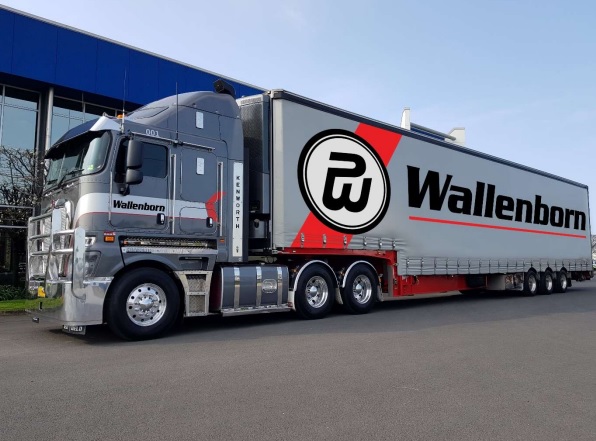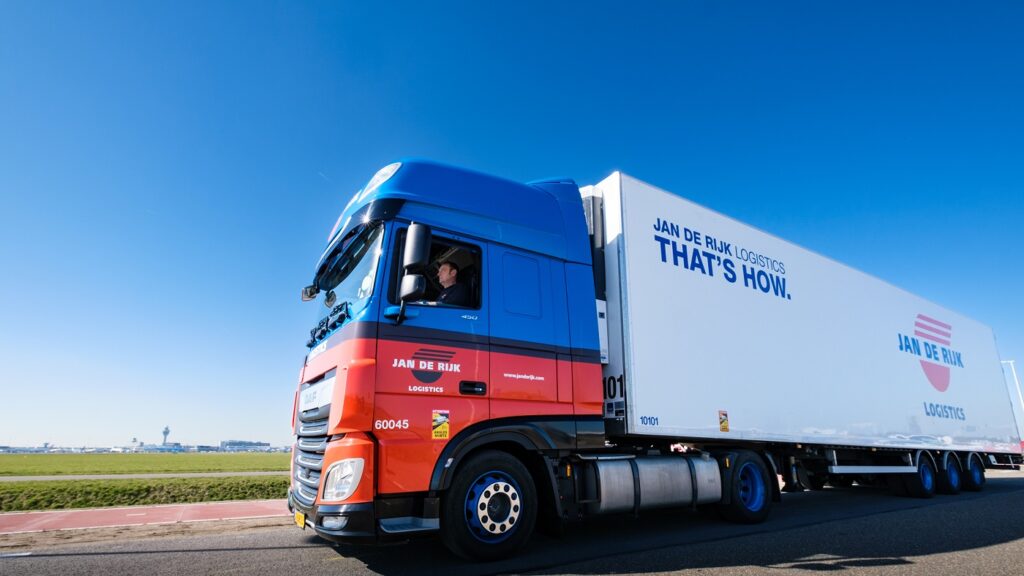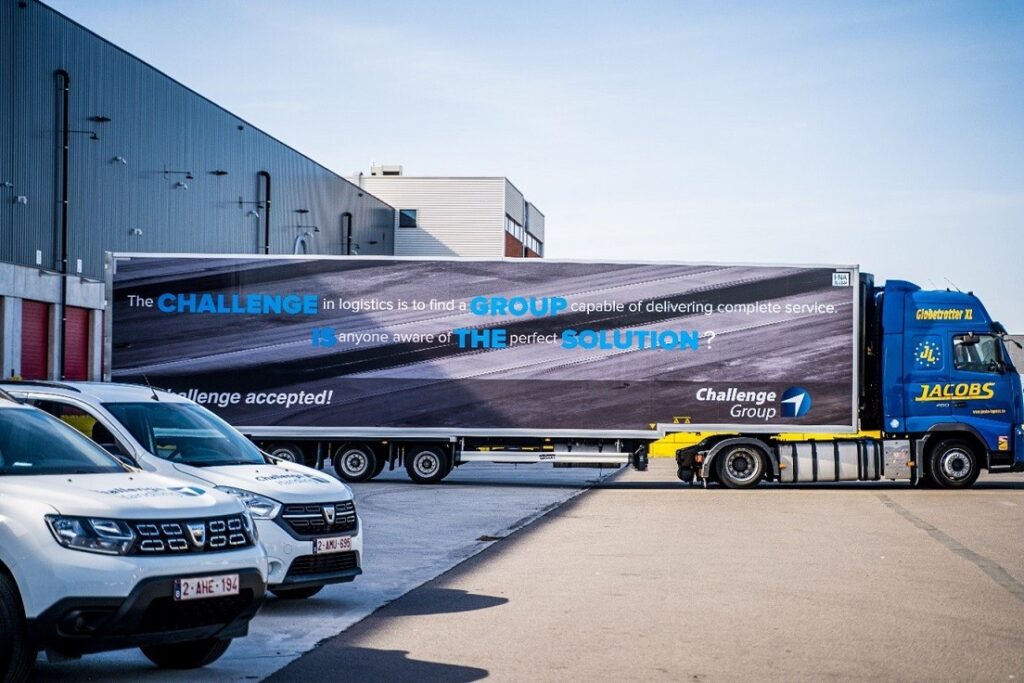RFS firms stand their ground in tough air cargo market
06 / 09 / 2023

Photo: Wallenborn
Road feeder services (RFS) companies are optimistic about demand, despite a mixed picture for volumes and growing capacity.
Wallenborn reports it hasn’t experienced a drop in RFS demand overall, and volumes are in line with the last three years, despite the general air cargo market’s post-pandemic shift in demand.
Jason Breakwell, commercial director at the Luxembourg-headquartered company, says: “It depends on the region, but demand for RFS is between 15 and 35% higher now than it was four years ago.”
This is because, during the pandemic, airlines and forwarders recognised that RFS could connect a large network of airports, which was important when bellyhold operations were curtailed.
This year, there has been sustained usage, he explains.
In 2022 for context, 633,000 RFS shipments were undertaken by Wallenborn, and over 5.2m tonnes were carried throughout the year.
However, Breakwell reflects that with the reinstation of belly capacity, RFS shipments are travelling shorter distances on average.
And the company has also experienced a reduction in export demand in some parts of Europe, including France, Germany, Italy, and Scandinavia.
But import RFS has gone up. “This year’s summer schedule has seen record numbers of transatlantic flights and there’s much more cargo arriving in London which needs delivery into mainland Europe.”
There has also been a drop in demand from Europe to China due to economic pressures in China, notes Breakwell. But, volumes, driven mainly by e-commerce, from China to Europe are “booming”.
Meanwhile, Jan de Rijk Logistics says the return of passenger flights and the now excess capacity on direct routes has lowered the need for RFS, and therefore volumes for the company.
“Previously we’ve seen a lot of, for example, shipments coming into Amsterdam, and then onwards by RFS because there was no capacity available into Frankfurt. But now they can fly into Frankfurt direct,” explains David Smorenburg, sales manager at Jan de Rijk
He adds that low volumes out of Asia and the US have impacted the RFS load factor as well.
The Roosendaal, Netherlands-based RFS specialist does expect volumes to pick up for RFS services in the latter part of the year as airlines decrease their capacity during winter.
“We expect that the market will stabilise and be more in favour of trucking services as a result of less capacity for cargo into Europe combined with the increase of production towards Christmas,” says Smorenburg.
In comparison, Challenge Group’s European RFS provider Challenge Logistics believes its focus on end-to-end logistics solutions encompassing non-standard cargo shipments, and with long-term clients, has protected it somewhat from the tough market conditions.
Challenge Group’s logistics manager Roi Kaplan says the business remains optimistic: “There has been a reduction in RFS business. But it just means that we need to be more efficient in how we operate to provide a cost-effective service.”
Based in Liege, Challenge Logistics has traditionally focused on Germany, the Netherlands and France for import and export RFS shipments and these countries will continue to be a focus, says Kaplan. But the business also serves the rest of Europe, as well as China and the US.
Kaplan adds that with Challenge Airlines IL, which has hubs at Ben Gurion Airport in Israel and Liège Airport in Belgium, “we have a big demand for perishables coming out of Israel, into Europe as well”.
Verticals driving RFS
Specialist cargo verticals have the best performance, says Stephan Pieters, commercial director Jan de Rijk. He says stable or increasing volumes can be seen with pharma, and fresh shipments – such as flowers and perishables.
“The more general the cargo becomes, the lower the volumes are,” he points out.
Smorenburg adds that post-pandemic, consumers are focused on holidays over physical products.
“Volumes for day-to-day products is down, and we see a decrease of between 20 and 30% in e-commerce volumes compared with previous years,” he says.
In comparison, Wallenborn is experiencing thriving demand for e-commerce, despite a drop in volumes of high-tech products.
“E-commerce is really accelerating demand for airfreight, not only from China, but from other parts of the Asia Pacific as well,” says Breakwell.
Wallenborn has also seen an increase in volumes for automotive, fashion, and fresh verticals – including food and flowers.
Meanwhile, the biggest verticals for Challenge Logistics are dangerous goods, perishables, engines and pharma.
Speaking about its engine vertical, which includes transportation of aircraft engines and parts, Kaplan says: “Engine has remained stable and strong since airlines began bringing their passenger aircraft back – with a need for maintenance.”
Pharma has also remained steady, says Kaplan.
“Obviously you cannot compare pharma volumes now to pandemic times. But we have always served the pharma market and have retained certain clients. That gives us a steady flow of product.”

Copyright: Jan de Rijk
Business development
Despite lower air cargo volumes this year, Jan de Rijk has launched intermodal RFS in Turkey, and has already begun setting up the business in-country, says Pieters.
Plus, he adds: “We’re also starting to develop our intermodal services to other destinations.”
Jan de Rijk has recently added RFS capacity between the Netherlands and Spain, and given its Spanish office team more autonomy.
“We will enable our Spanish office to get more focused on sales and development,” says Pieters.
Smorenburg adds that Jan de Rijk is expanding its office in Milan, and has opened a circa 15,000 sq ft cross-docking and storage warehouse in the city, near the airport.
Wallenborn is also working on expansion, having this year established its own distribution networks in central and southern Europe, to add to its network in northern Europe.
The motivation has been the changing nature of e-commerce supply chains, with e-commerce stock increasingly stored in China and short lead times between order and delivery, meaning “airfreight has become essential”, says Breakwell.
To minimise congestion, Wallenborn is therefore working on better-connected, faster transit from the major hubs in Europe.
“The map is changing in terms of where connectivity is needed,” stresses Breakwell.
“I think we’ll see more freighter flights into southern, central and eastern Europe over the coming year or two, based the signals that we’re receiving from our customers based in Asia Pacific,” says Breakwell.
Another big development for Wallenborn this year has been its appointment as Etihad Cargo’s RFS partner for Europe, including Amsterdam, Paris and Frankfurt.
Plans for next year include a major expansion of its services in Eastern Europe.
Challenge Logistics on the other hand has not revealed any specific plans for expansion, however, Kaplan says: “In terms of RFS, we will continue expanding to where we fly and provide alternative services to where we don’t.”
The company currently operates around 1,250 trucks a month to more than 100 different destinations in Europe. In the US it operates between 700-800 a month.
“There is no one country in Europe that we cannot serve,” says Kaplan. Likewise, even though we only fly only to the US, we provide RFS services to Canada and Mexico. We will always follow the airline.”
Alternative airports
Wallenborn expects operating restrictions at airports to boost RFS demand.
In Europe, airports such as Amsterdam and Frankfurt are becoming congested, leading to capacity constraints, Breakwell explains.
Many airports are also facing operating restrictions as part of government decarbonisation plans, for example at Schiphol, that will impact the volumes that they can handle.
“Airlines will be restricted in where and when they can fly. So that is going to increase demand for the services that we provide.”
Traditional cargo hubs, many of which now focus more on passenger operations, also have competition from a growing number of new regional hubs which emerged as air cargo players during the pandemic and are meeting demand from airlines, says Breakwell.
“The feedback from airlines is that they are searching for alternative gateways – especially for freighters.”
And, he adds, because cargo will be spread out across more airports, “there will be a need for more RFS”.
Smorenburg agrees the environmental regulatory upheaval that airports are facing from governments could result in RFS market changes as it may see airlines change routes, and RFS networks altered.
He says it’s not yet clear whether and where the airlines will divert to, but options could include Liege and Frankfurt Hahn, or Munich and Leipzig.
Certainly, Jan de Rijk is using regional airports more because of the cost and efficiency benefits.
“Costs for airlines are lower at regional airports versus the bigger ones,” says Smorenburg.
“In the smaller airports, the loading and offloading handling for trucks is normally quicker than in the major airports.”
And having a large network around the major airfreight hubs provides flexibility to adjust to changes.
According to Smorenburg: “Most of these regional airports are within our network, en-route either to Paris or Brussels or Frankfurt so there won’t be increased driving distances involved.”
The continued development and use of regional airports is a positive, agrees Kaplan as it saves time compared to with larger airports, where air cargo competes with passenger airlines.
“During Covid, clients and agents became interested in using regional airports over the main, congested hubs.
“We were able to provide solutions that sometimes were better than going into those main destination hubs.
“For example, a flight landed in Liege but still managed to be delivered completely to the client before their flight landed in Schiphol.”
This trend also brings investment to supply chains connected to these airports, stresses Kaplan.
“Everything was centralised in the main hubs, but the development of regional airports brings infrastructural investment into those locations as well.
“I see this trend continuing – making regional airports kind of a micro hub for cargo-targeted clients.”

Photo: Challenge Group
Uphill battle
Kaplan says challenges faced by Challenge Group include red tape. “Regulatory compliance changes almost yearly, Brexit is an example,” he says.
Costs are also an ongoing challenge, as is scalability. “We are a group that intends to almost double in the next few years. And obviously, it means that with the increase of airfreight capacity, the need of RFS solution will increase as well.”
For Wallenborn, the EU mobility package that was implemented last year and stipulated that trucks and drivers had to return to base within set timeframes, is still a challenge.
It has raised fuel costs and reduced the time available for RFS operations, says Breakwell.
He reflects: “It’s impacted not only productivity, but also operational costs have increased by approximately 12% over the last two years.”
Secondly, the CO2 emissions tax that will be added to road tolls for trucks in Germany is due to come into force from December, which will add cost pressures for customers, and may also “fuel inflation” points out Breakwell.
He adds: “Frankfurt is an important transit hub to and from other countries, but I think airlines may actually consider flying to different hubs.”
Likewise, Jan de Rijk is also concerned about costs, specifically reduced RFS service prices on account of extra capacity in the market.
“Some companies are focusing on filling their trucks regardless of what the price is. That doesn’t help the market, or the industry to survive,” emphasises Smorenburg.
The company is also monitoring a reduction in RFS bookings from companies and forwarders in the China-Europe supply chain.
Smorenburg says: “Everybody’s working on their costs picture. For example, a customer would previously book a flight into Amsterdam and then onward trucking to Paris.
“But they now terminate the master airwaybill in Amsterdam, leaving their customer to move it to their own warehouse.
“We have to knock on the doors of forwarders or brokers, to maintain this business.”
He says on the back of this there are opportunities to establish new supply chain relationships within the logistics supply chain.
However, he noted: “Most of the bigger forwarders or integrators have their own trucking network and their own assets. So that’s sometimes not an option for us.”













